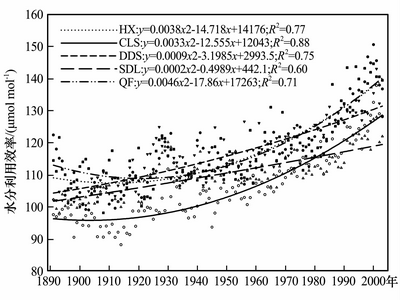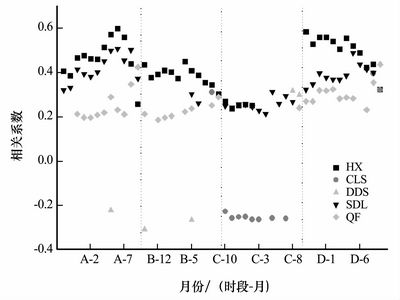Spatio-Temporal Variability and Climatic Significance of Tree Ring′s δ13C of Picea crassifolia on the Qilian Mountains
Updatetime:2010-12-09From:
【Enlarge】【Reduce】
The carbon isotopic composition (δ13C) of tree rings was used to assess the changes in intrinsic water-use efficiency (Wi) and climate change on the background of increasing atmospheric CO2 during the period of 1891-2003. Five Qinghai spruce (Picea crassifolia) standing in the Qilian Mountains and growing with a precipitation gradient were selected. All five δ13C were correlated each other, but there were two sites (DDS & CLS) far away from the main body of mountains, which showed relative weakly connections to other sites. The Wi of all sampling trees were enhanced in response to the increasing atmospheric CO2 concentration, while the spruce growing in the hinterland of the mountains had enhanced Wi less than those in other sites. Based on the correlation between carbon isotope discrimination (Δ) and Palmer drought severity index (PDSI), the drought history covering the period of 1891-2003 was reconstructed in the study region. There were two most severe drought phases in the late 1920s to the early 1930s and the last ten years, caused by less precipitation and warming, respectively. This study will be useful in assessing further spatial climate-related bioclimatic information.
 |
 |
Appendix




